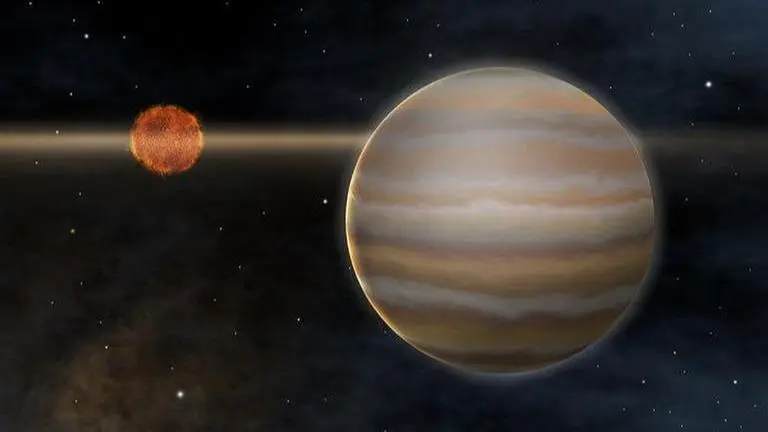Updated 11 September 2022 at 15:55 IST
ESO shares throwback image of first exoplanet photographed outside solar system 18 yrs ago
ESO shared an image of an exoplanet, 5 times the mass of Jupiter and 200 light-years away. It was the first exoplanet to be photographed 18 years ago.
- Science News
- 2 min read

The European Southern Observatory (ESO) has shared a throwback image of an exoplanet which was the first to be published 18 years ago on September 10. This exoplanet named 2M1207b is about five times the mass of Jupiter and lies roughly 200 light-years away near the southern constellation of Hydra. Interestingly, this planet, which was the first to be photographed outside our solar system, is orbiting a young brown dwarf star named 2M1207A and astronomers have confirmed that the two are gravitationally bound to each other.
18 years ago today the first image of an exoplanet was published. It was taken with our VLT, and shows a gas giant planet orbiting a brown dwarf. New data taken one year later confirmed that both objects were indeed gravitationally bound.
— ESO (@ESO) September 10, 2022
🔗 https://t.co/X6prL2t5hn
Credit: @ESO pic.twitter.com/MxwSL4Gc6c
About the first photographed exoplanet
[Actual image of the exoplanet 2M1207b (red) around its star 2M1207A; Image: ESO]
According to ESO, the picture was taken using the Very Large Telescope (VLT) in northern Chile and the discovery ended a decade-long discussion on the nature of the planetary system. Observations have revealed that the planet is 100 times fainter than the star it orbits and an examination of the planet's atmosphere presented evidence of water molecules, confirming that it is cold.
Such conditions on the planet are possible because of its staggering distance from the brown dwarf, which is 55 times greater than the distance between the sun and Earth. Moreover, the experts estimated the size of this exoplanet (five times greater than Jupiter) using a method of analysis that focuses on the strength of its gravitational field.
Advertisement
Given the rather unusual properties of the 2M1207 system, the giant planet most probably did not form like the planets in our solar system," Gael Chauvin, ESO astronomer, and lead researcher said in an official statement at the time of the discovery. "Instead it must have formed the same way our Sun formed, by a one-step gravitational collapse of a cloud of gas and dust."
Moreover, Benjamin Zuckerman, UCLA professor, and research team member said that the two objects, which are moving together in space, mark the first instance when an exoplanet has been detected around its star nearly twice as far as the distance between Neptune and the sun.
Fast forward eighteen years, the exoplanets are now being imaged using the newly commissioned James Webb Space Telescope, which is expected to help in a deeper understanding of the early universe. Last week, the world's most powerful observatory delivered its first image of an exoplanet lying about 385 light-years from Earth.
Advertisement
🆕@ESA_Webb has taken its first image of an #exoplanet 🤩
— ESA Science (@esascience) September 1, 2022
6–8 times the mass of Jupiter and 15–20 million years old – still a baby in planet years!#Webb’s powerful infrared gaze will reveal more than ever before about worlds beyond our Solar System.
👉 https://t.co/vTHK1zPmEp pic.twitter.com/lUgmW6mI4x
Published By : Harsh Vardhan
Published On: 11 September 2022 at 15:55 IST

